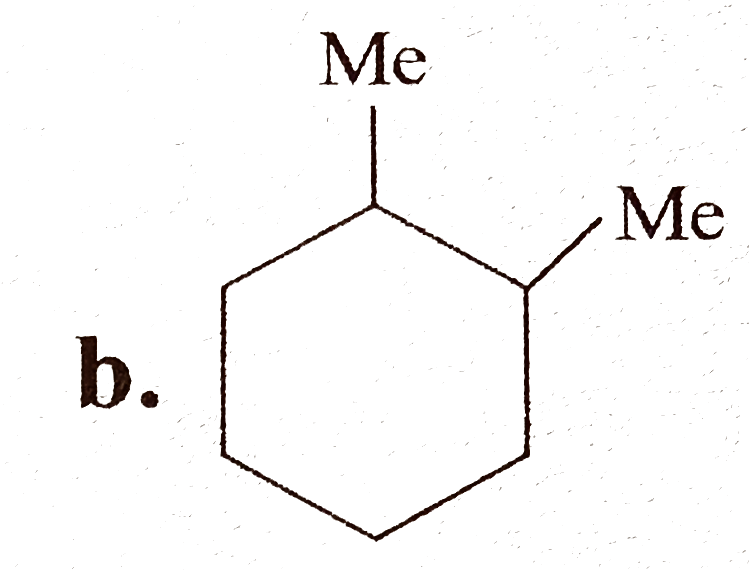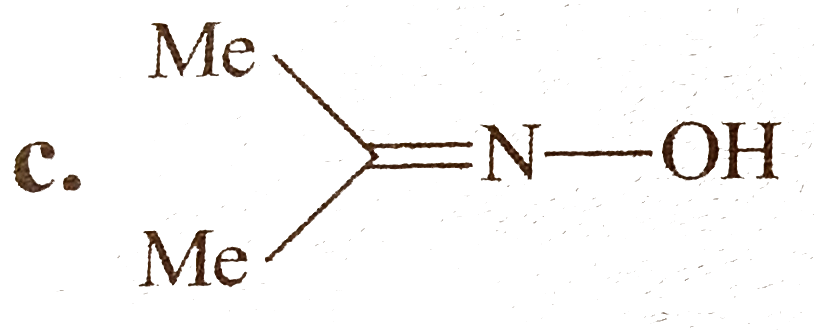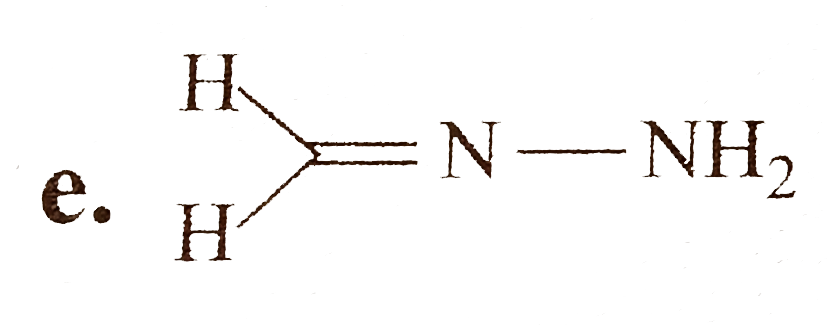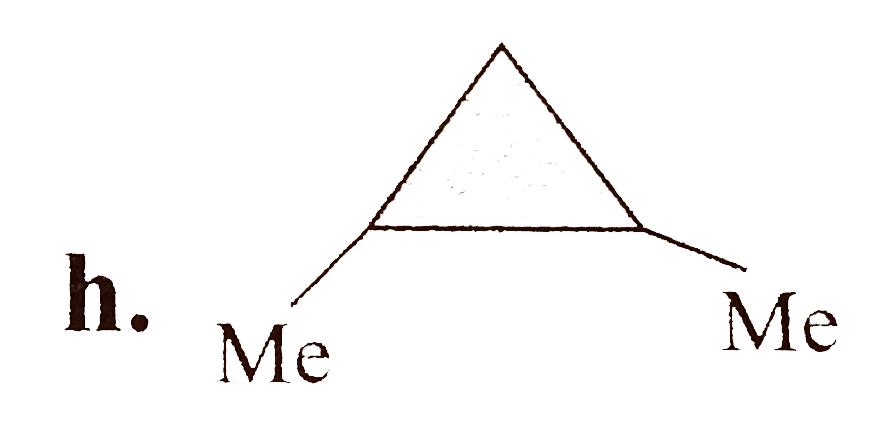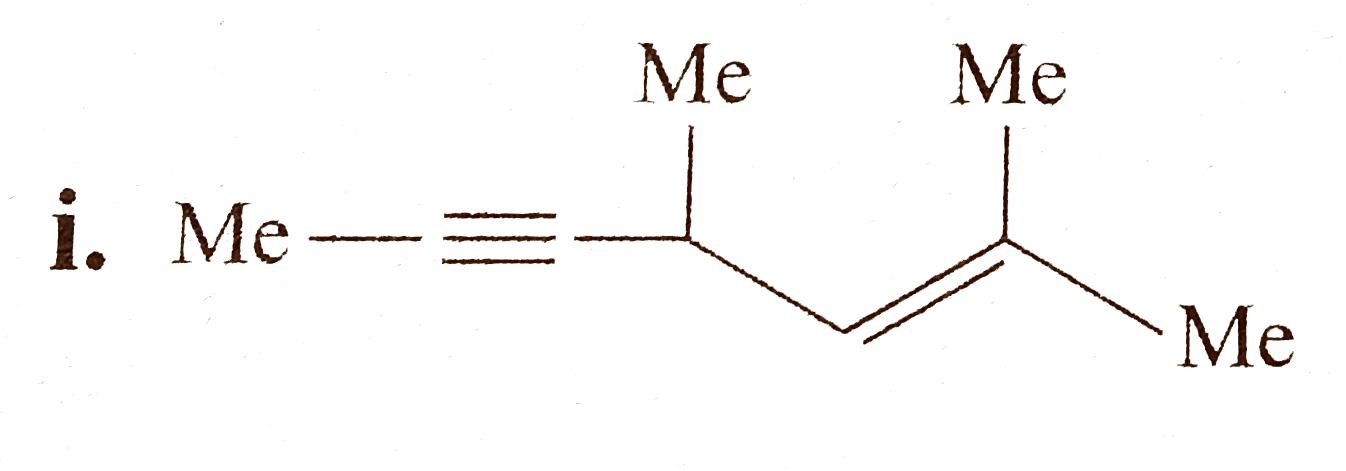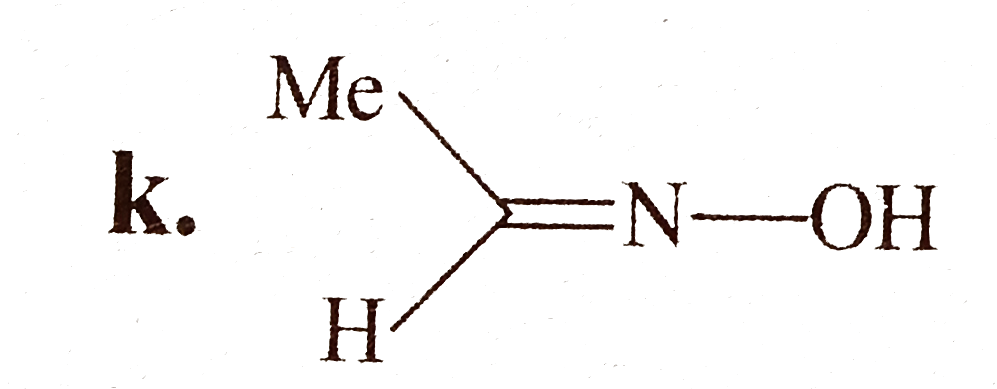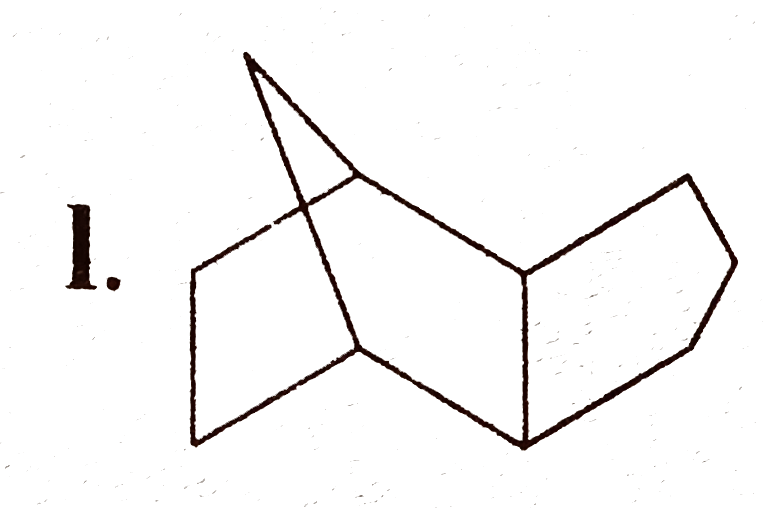a. Which of the following shows primary isotope effectgt
i. Nitration of benzene. ii. Halogenation of CH4. Iii. Alkene prepared by E.lcB mechanism.
b. Which of the following shows secondary isotope effect?
i. An alkene obtained by E.2 mechanism
ii. An alkene obtained by E.l mechanism
c. Which of the following examples of KH/KD (ratio of rate constant) is greater than 1.
i. PhCH2CH2Br adn PhCD2CH2Br towards de-hydrohalogenation by strong base.
ii. Conservation of:
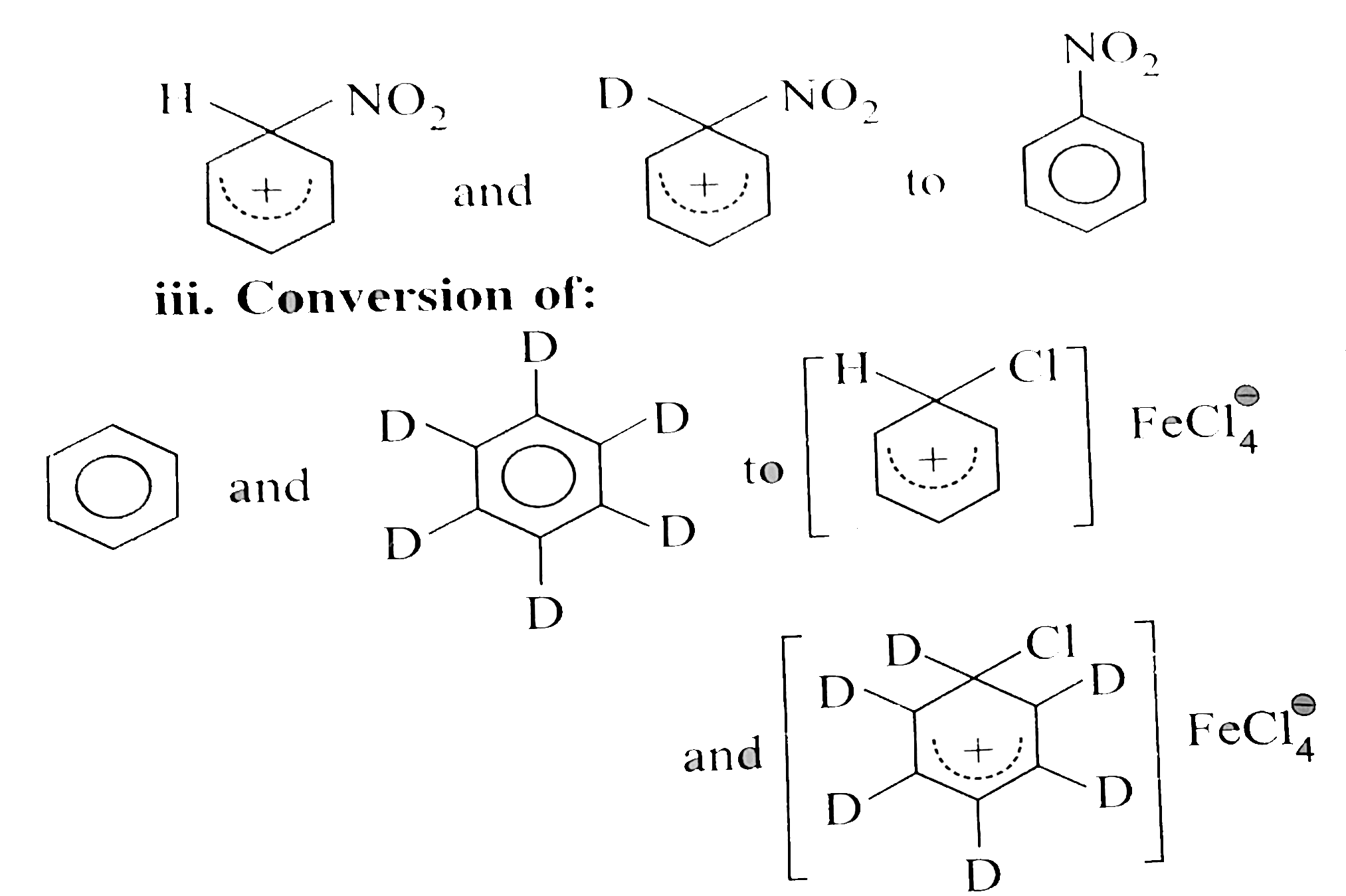
iii. Conservation of:

Text Solution
I. It does not show l∘is⊤eeffectsinceno(C-H)or(C_D)bondbreaks∈firstR.D.S.<br>ii.Itshows1^(@)is⊤eeffectsince(C-H)and(C-D)bondsarebroken∈thehalogenationofCH_(4)andCD_(4).<br>H_(3)C - H underset(hv)overset(Cl_(2)+)(rarr) H_(3)C - Cl + HCl<br>D_(3) C - D underset(hv)overset(Cl_(2)+)(rarr) D_(3) C - Cl + DCl<br>iii.Itdoes¬show1^(@)iso⊤eeffect.InElcB,thereactionratedoes¬dependonthebreak∈gof(C-H)or(C-D)bondbutdependsonthe≤av∈gX^(o-)ion∈thesecondstep.<br><imga≤ocr_imageload∈g=lazysrc=https://d10lpgp6xz60nq.cloudfront.net/physics_images/KSV_CHM_ORG_P2_C11_S01_023_S01.pngwh=80%mx-autosty≤=background:white;><br>EWG [(-NO_(2))group]∈thecompoundandthep∞r≤av∈gabilityofF^(o-)makesthecarbanionstab≤.<br><imga≤ocr_imageload∈g=lazysrc=https://d10lpgp6xz60nq.cloudfront.net/physics_images/KSV_CHM_ORG_P2_C11_S01_023_S02.pngwh=80%mx-autosty≤=background:white;><br>b.i.InElthereactiontakesplacesbytheformationof3^(@) C^(o+)∈theR.D.S.<br>(CH_(3))_(3) C - X overset(R.D.S)(rarr) (CH_(3))_(3) C^(o+) + X^(o-)<br>(CD_(3))_(3) C - X overset(R.D.S)(rarr) (CD_(3))_(3) C^(o+) + X^(o-)<br>Here,(C-H)or(C-D)bondis¬broken,buttherateofreactiondependsonthenatureofthesurround∈ggroupsat(C-X)ortherateofreactionissloweddownifDis∈corporated,henceitshows2^(@)is⊤eeffect.<br>ii.InE2therateofreactiondependsonthebreak∈gofthe(C-H)or(C-D)bond,henceitshows1^(@)is⊤eeffect.<br><imga≤ocr_imageload∈g=lazysrc=https://d10lpgp6xz60nq.cloudfront.net/physics_images/KSV_CHM_ORG_P2_C11_S01_023_S03.pngwh=80%mx-autosty≤=background:white;><br>c.i.Sinceb→hare1^(@) RXsodehydrohalogentionreactionproceedsviaE2mechanismandthisdependsonthebreak∈gofthe(C-H)or(C-D)bond.Itshows1^(@)is⊤eeffect.<br><imga≤ocr_imageload∈g=lazysrc=https://d10lpgp6xz60nq.cloudfront.net/physics_images/KSV_CHM_ORG_P2_C11_S01_023_S04.pngwh=80%mx-autosty≤=background:white;><br>Since∈reaction(I)and(C-H)bondisbroken,the(C-H)bondisbrokenmoreeasilythanthe(C-D)bond.Sotherateof(I)isf∗erthenatˆof(II).Hence,K_(H)//K_(D) gt 1.<br>ii.<imga≤ocr_imageload∈g=lazysrc=https://d10lpgp6xz60nq.cloudfront.net/physics_images/KSV_CHM_ORG_P2_C11_S01_023_S05.pngwh=80%mx-autosty≤=background:white;><br>iii.<imga≤ocr_imageload∈g=lazysrc=https://d10lpgp6xz60nq.cloudfront.net/physics_images/KSV_CHM_ORG_P2_C11_S01_023_S06.pngwh=80%mx-autosty≤=background:white;><br>In⊥hthereactions≠itherteh(C-H)northe(C-D)bondbraksandrateof⊥hthereactionsis:<br>rate= K [Cl^(o+)][Benze≠],soK_(H)//K_(D) = 1.
|
Topper's Solved these Questions
- AROMATIC COMPOUNDS AND ALKYL AND ARYL HALIDES BOOK - CENGAGE CHEMISTRY ENGLISHCHAPTER - AROMATIC COMPOUNDS AND ALKYL AND ARYL HALIDES EXERCISE - Solved Examples
21 Videos
- AROMATIC COMPOUNDS AND ALKYL AND ARYL HALIDES BOOK - CENGAGE CHEMISTRY ENGLISHCHAPTER - AROMATIC COMPOUNDS AND ALKYL AND ARYL HALIDES EXERCISE - Solved Problems
37 Videos
- APPENDIX INORGANIC VOLUME 2BOOK - CENGAGE CHEMISTRY ENGLISHCHAPTER - APPENDIX INORGANIC VOLUME 2EXERCISE - Short Answer Type
179 Videos
- BIOMOLECULESBOOK - CENGAGE CHEMISTRY ENGLISHCHAPTER - BIOMOLECULESEXERCISE - Exercises Archives (Analytical And Descriptive)
8 Videos
Similar Questions
Knowledge Check
Which of the following alcohols connot be prepared from an alkene?
A B
B C
C D
D
Which of the following alkene is most stable alkene.
ACH3−CH2−CH=CH2BCH3−CH=CH−CH3C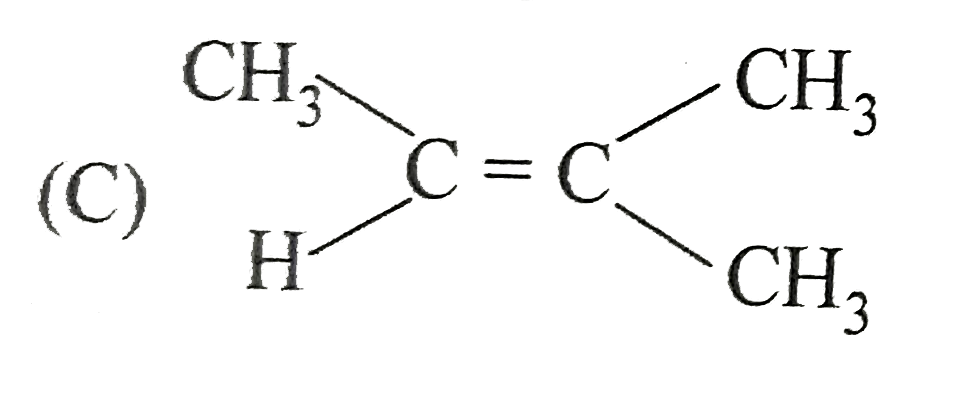 D
D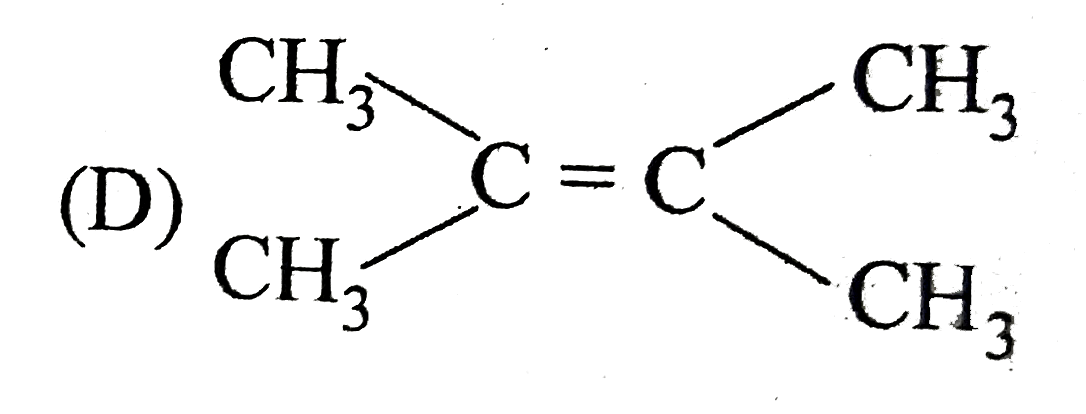
H2,D2,T2 are isotopes of each other.
Which of the following pairs shows maximum isotope effect?A_11Hand21DB_816Oand188OC_(17)37Cland3717ClD_612Cand146C
Which will not react by E2 mechanism ?

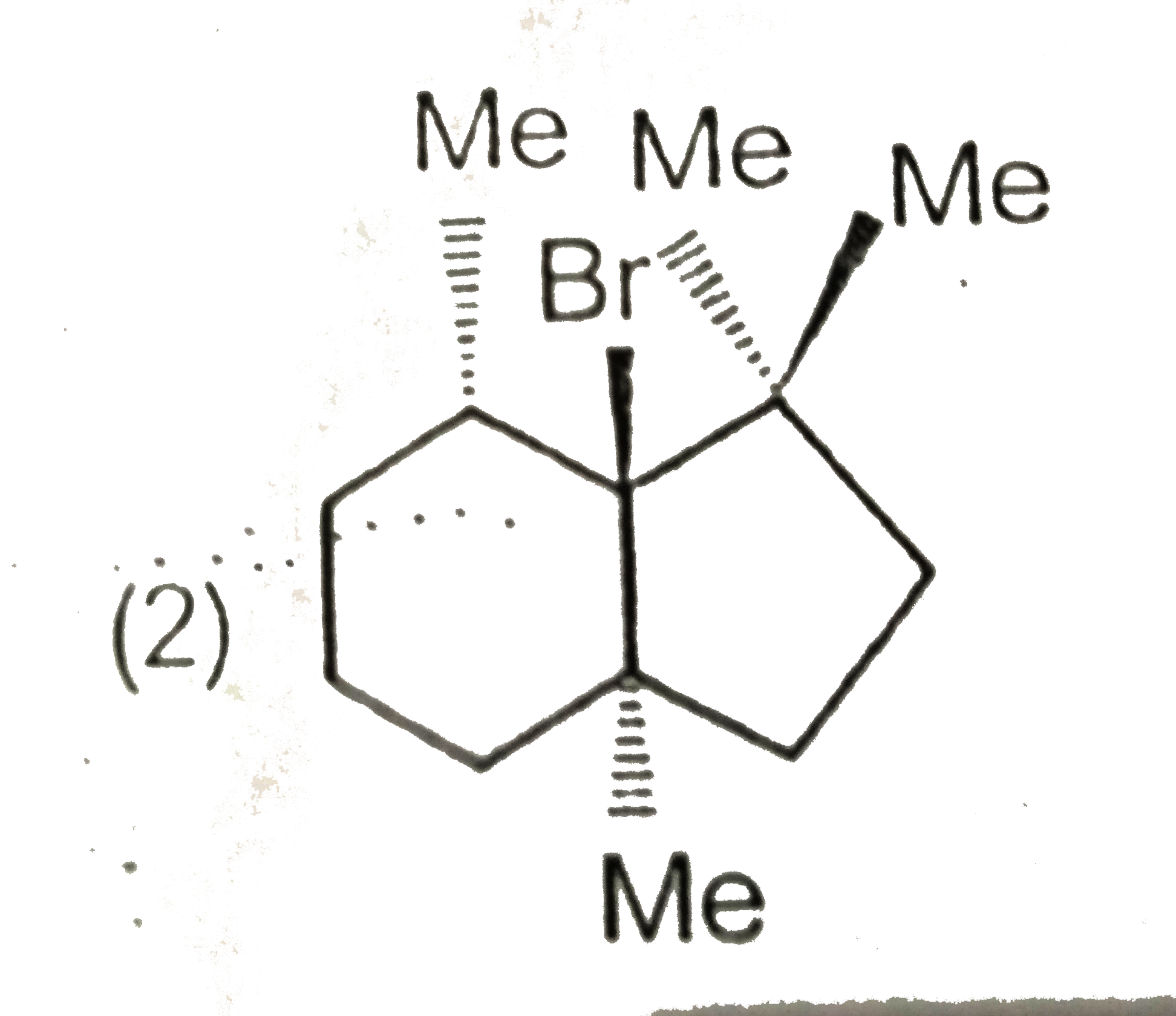
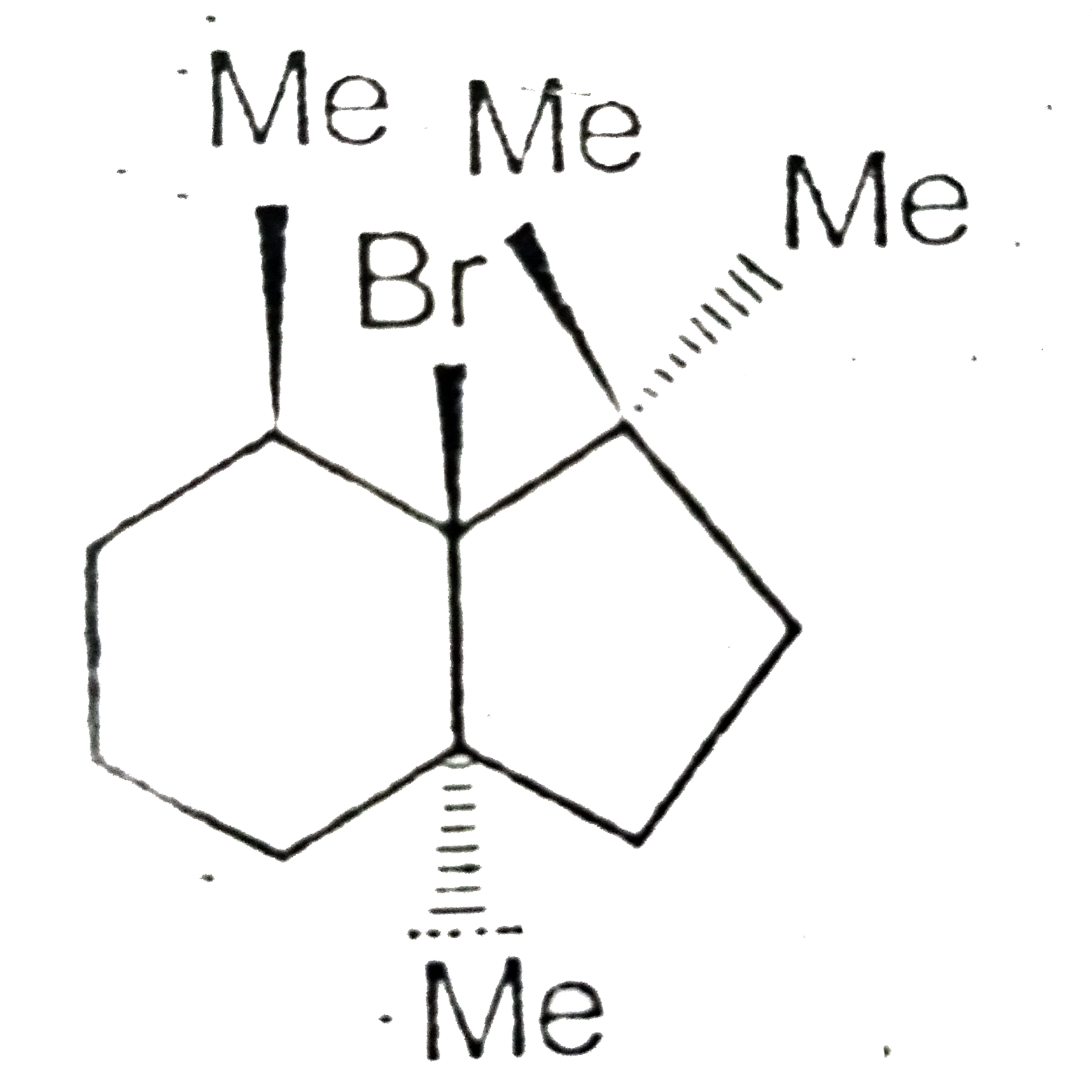
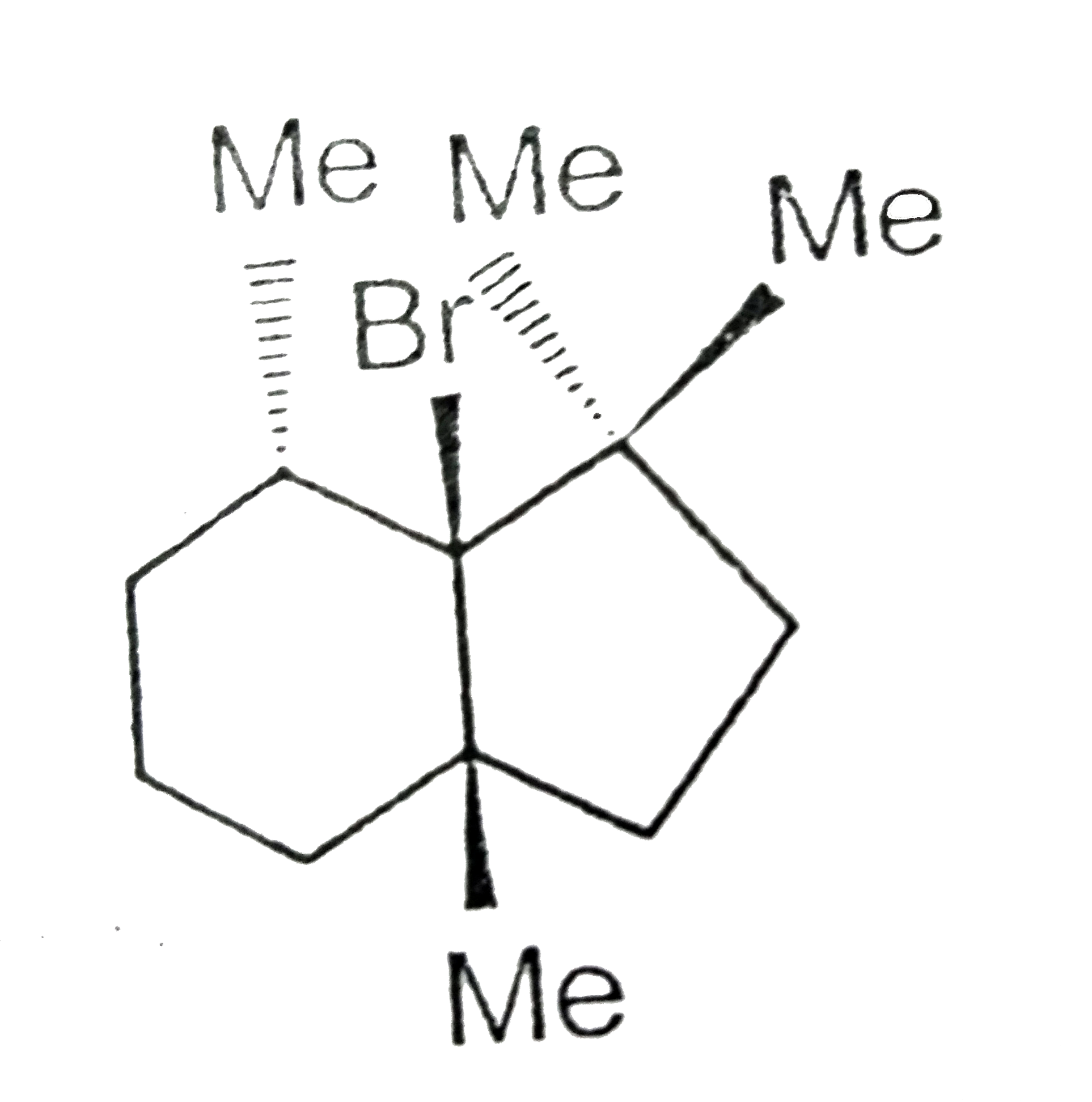
View SolutionWhich of the following compound will react with the fastest rate by E2 mechanism?
View SolutionIsopropyl alcohol is obtained by reacting which of the following alkenes with conc. H2SO4andH2O
View SolutionWhich of the following alkenes will show maximum number of hyperconjugation forms?
View SolutionWhich of the following alkenes will show maximum number of hyperconjugation forms ?
View Solution


